A Bony Bankart lesion often marks the beginning of chronic shoulder instability. Caused by anterior shoulder dislocation, this injury leads to structural disruption of the glenoid rim. Understanding its clinical presentation is key to early diagnosis and effective treatment. This article covers the hallmark symptoms, physical exam findings, and red flags that suggest a Bony Bankart lesion.
1. What Patients Typically Experience
1.1. Pain
- Sharp pain during or after shoulder dislocation
- Deep, aching pain in the front of the shoulder during daily use
- Often worsened with overhead motion or carrying weight
- May radiate slightly down the arm but remains localized near the joint
1.2. Instability
- Recurrent “slipping” or “giving out” sensation
- Apprehension when arm is in abduction and external rotation
- Often described as a lack of confidence in the shoulder, especially in athletic positions
1.3. Mechanical Symptoms
- Clicking, popping, or catching with certain movements
- May feel like something is “out of place” in the joint
- These sounds are typically caused by the displaced labrum or bone fragment shifting during motion
2. Physical Exam Findings
2.1. Apprehension Sign
- With the arm abducted and externally rotated, patients show visible anxiety or reflexively guard the shoulder.
- This test recreates the position of dislocation and stresses the damaged rim.
2.2. Relocation Test
- Applying gentle posterior pressure to the humeral head during apprehension reduces pain or fear.
- A positive result strongly suggests anterior instability and potential glenoid rim compromise.
2.3. Load and Shift Test
- Detects excessive translation of the humeral head over the glenoid.
- Greater anterior movement points to structural damage such as a Bony Bankart.
2.4. Sulcus Sign
- Downward traction on the arm causes a visible gap between the humeral head and acromion.
- Suggests capsular laxity, often seen in combination with glenoid defects.
3. Symptom Progression Over Time
3.1. Immediately Post-Injury
- Pain, swelling, and guarding
- Limited range of motion due to inflammation
- Instability may not be apparent until initial swelling resolves
3.2. Subacute Phase (Weeks Later)
- Pain subsides but mechanical symptoms begin to surface
- Recurring instability events, especially during high-demand activity
- Increased apprehension in daily or sports movements
3.3. Chronic Phase
- Multiple dislocations or subluxations
- Shoulder fatigue and muscular compensation
- Long-standing symptoms may lead to reduced activity levels or sports withdrawal
4. Associated Injuries and Their Symptoms
4.1. Hill-Sachs Lesion
- Caused by humeral head impaction against the glenoid
- May cause catching or locking when humeral head “engages” with glenoid rim
4.2. Labral Tears
- Often coexist with Bony Bankart
- Contribute to pain and mechanical sensations
4.3. Rotator Cuff Strain (especially in older patients)
- Shoulder weakness, especially with overhead lifting
- Difficulty sleeping on the affected side
5. When to Suspect a Bony Bankart Lesion
- History of traumatic dislocation, especially with loud popping or visible deformity
- Persistent symptoms despite conservative therapy
- Instability episodes triggered by light or predictable movement
- Positive apprehension and relocation tests
In these cases, advanced imaging such as CT or MRI should be considered to confirm diagnosis and assess bone loss severity.
6. Psychological Impact
- Patients often report fear or anxiety related to movement
- Avoidance behavior may develop, particularly in athletes or active individuals
- Delayed diagnosis and prolonged instability can lead to frustration, reduced quality of life, and sport-specific burnout
Frequently Asked Questions
1. What does shoulder instability feel like in Bony Bankart lesions?
It often feels like the shoulder is “loose,” slips out of place, or lacks control during movement, particularly when lifting or reaching behind the head.
2. Can mechanical clicking be the only symptom?
Yes, in some cases, mechanical symptoms like clicking or catching may occur without overt pain or instability, especially early on.
3. Are symptoms worse at night?
Pain can increase at night, particularly if the patient rolls onto the affected shoulder. Mechanical symptoms usually occur with motion rather than rest.
4. Is numbness a symptom of Bony Bankart?
Not directly. However, if the shoulder dislocation affects surrounding nerves (like the axillary nerve), numbness or tingling can occur.
5. Should I see a specialist if I feel recurrent shoulder instability?
Absolutely. Recurrent instability after a traumatic dislocation should be evaluated by an orthopedic surgeon, especially if the symptoms persist despite therapy.
